|
|
Advertisement:
|
|
Compro VideoMate TV Gold Plus |
|
Join the community - in the OCAU Forums!
|
Installation
INSTALLATION
Hardware installation was a snap. The process is self-explanatory for experienced PC users. The less experienced finds help in a detailed installation manual. We plugged the VideoMate TV Tuner card in, connected the antenna cable, the composite video and the audio-in cable.
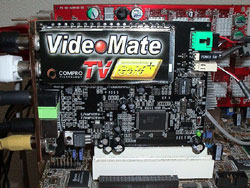
After booting we installed the drivers, Compro’s PVR and the bundled Ulead software. After rebooting we found with the XP Device Manager that VideoMate was properly recognized with 2 entries as TV Tuner and TV Capture device.
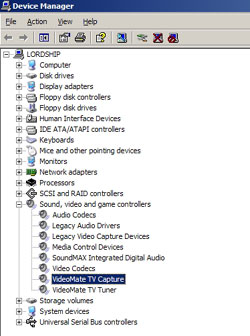
TV reception was possible on the first attempt within 10 minutes after we started installation. Additional wiring which would take a little more time however is necessary for users who want to take advantage of VideoMate’s advanced “power-up” function. More about this later.
Conflicts with other PCI devices triggered by sharing IRQs have been a controversial issue for TV cards. Our previously tested Asus 880 had a problem with the on-board Highpoint 374 controller on the IT7 mainboard. Usually motherboards manufacturers assign the fourth slot from AGP to be an independent IRQ. To avoid conflicts between other PCI devices Compro is therefore recommending users put their PCI TV tuner card in the 4th slot. We followed this advice and XP Device Manager informed us that the VideoMate was indeed running with its own, un-shared IRQ. We then tested the VideoMate with 2 additional PCI devices (sound and RAID cards) and found no conflicts.
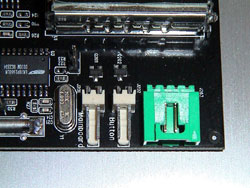
VideoMate offers internal audio connection between the TV tuner card and a soundcard. The internal audio port can be connected with the included “Audio Patch cable” to the auxiliary port of the motherboard or the soundcard. We found this feature quite convenient and it wasn't present on the Asus card. Additionally, an external audio connection between VideoMate and a sound-card is possible via the Audio-out port on the bracket. What we did not like is that the VideoMate does not have the 2 audio-in ports to accommodate the 2 audio cables which are used to get sound signals from video recorders. The VideoMate’s audio-in port has only one audio-in port and that is of a different (smaller) format.
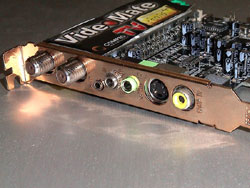
By comparison, the Asus comes with a separate adaptor offering all 3 ports which are necessary to get the composite video and the 2 audio signals from a video recorder.
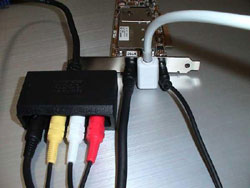
The ASUS setup
In order to get the sound from our video recorder we had to buy a special adaptor cable combining the red and white audio cables from the video recorder into one cable plug which fits into the VideoMate’s audio-in port.
|
|
Advertisement:
All original content copyright James Rolfe.
All rights reserved. No reproduction allowed without written permission.
Interested in advertising on OCAU? Contact us for info.
|

|


